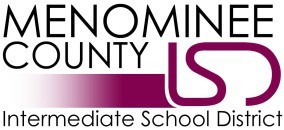Least Restrictive Environment (LRE)
What is Least Restrictive Environment (LRE)?
In basic terms, LRE refers to the setting where a child with a disability can receive an appropriate education designed to meet his or her educational needs, alongside peers without disabilities to the maximum extent appropriate. Since its earliest days, the IDEA has displayed a strong preference for children with disabilities to be educated alongside their peers without disabilities, to the maximum extent appropriate. It recognizes that, in many cases, supplementary aids and services must be provided to a child with a disability to enable him or her to be educated in the general education classroom. Supplementary aids and services can play a pivotal role in supporting the education of individual children with disabilities in the regular educational environment. Simply put, removal of a child with disabilities from the regular education class may occur only if the child cannot be satisfactorily educated in the regular educational environment with the use of supplementary aids and services.
Federal special education law, or IDEA, has two important requirements for a child’s placement (§§300.114 through 300.117). Each public agency must ensure that—
(i) To the maximum extent appropriate, children with disabilities, including children in public or private institutions or other care facilities, are educated with children who are nondisabled;
and
(ii) Special classes, separate schooling, or other removal of children with disabilities from the regular educational environment occurs only if the nature or severity of the disability is such that education in regular classes with the use of supplementary aids and services cannot be achieved satisfactorily. [§300.114(a]
LRE Continuum - MDE
Considering Supplementary Aids and Services
Providing supplementary aids and services is essential for many children with disabilities to progress and learn. The term “supplementary aids and services” is defined at §300.42, as follows:
Supplementary aids and services means aids, services, and other supports that are provided in regular education classes, other education-related settings, and in extracurricular and nonacademic settings, to enable children with disabilities to be educated with nondisabled children to the maximum extent appropriate in accordance with §§300.114 through 300.116.
Supplementary aids and services can be accommodations and modifications to the curriculum under study or the manner in which that content is presented or a child’s progress is measured, but that’s not all they are or can be. Supplementary aids and services can also include direct services and supports to the child, as well as support and training for staff who work with that child. Determining what constitutes appropriate supplementary aids and services for a particular child is made on an individual basis.
Supplementary aids and services are intended to be provided in regular education classes, other education-related settings, and extracurricular and other nonacademic settings as outlined in this guidance from MDE.
LRE Guidance
LRE: The Requirements Package MDE
LRE in Nonacademic Settings - MDE
LRE Resources - MDE
LRE Applies to Preschool US DOE
FAPE in the LRE - Family Matters
LRE and Placement - Michigan Alliance for Families
Promoting Inclusion and Belonging Everyday - START Project GVSU


